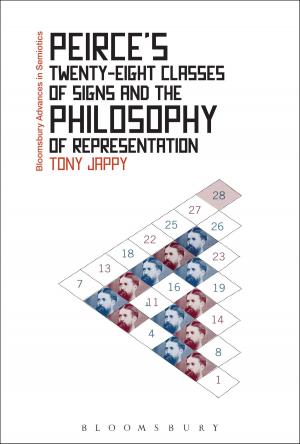Drawing Difference
Connections Between Gender and Drawing
Nonfiction, Art & Architecture, General Art, Art History| Author: | Phil Sawdon, Professor Marsha Meskimmon | ISBN: | 9780857729125 |
| Publisher: | Bloomsbury Publishing | Publication: | March 24, 2016 |
| Imprint: | I.B. Tauris | Language: | English |
| Author: | Phil Sawdon, Professor Marsha Meskimmon |
| ISBN: | 9780857729125 |
| Publisher: | Bloomsbury Publishing |
| Publication: | March 24, 2016 |
| Imprint: | I.B. Tauris |
| Language: | English |
Drawing has been growing in recognition and stature within contemporary fine art since the mid-1970s. Simultaneously, feminist activism has been widespread, leading to the increased prominence of women artists, scholars, critics and curators and the wide acknowledgement of the crucial role played by gender and sexual difference in constituting the subject. Drawing Difference argues that these developments did not occur in parallel simply by coincidence. Rather, the intimate interplay between drawing and feminism is best characterised as allotropic – a term originating in chemistry that describes a single pure element which nevertheless assumes varied physical structures, denoting the fundamental affinities which underlie apparently differing material forms. Analysing drawing from the 1970s to today, including works by Annette Messenger, Dorothea Rockburne, Carolee Schneemann, Toba Khedoori and Susan Hauptmann, this book recasts the relationship between drawing and feminist thought.
Drawing has been growing in recognition and stature within contemporary fine art since the mid-1970s. Simultaneously, feminist activism has been widespread, leading to the increased prominence of women artists, scholars, critics and curators and the wide acknowledgement of the crucial role played by gender and sexual difference in constituting the subject. Drawing Difference argues that these developments did not occur in parallel simply by coincidence. Rather, the intimate interplay between drawing and feminism is best characterised as allotropic – a term originating in chemistry that describes a single pure element which nevertheless assumes varied physical structures, denoting the fundamental affinities which underlie apparently differing material forms. Analysing drawing from the 1970s to today, including works by Annette Messenger, Dorothea Rockburne, Carolee Schneemann, Toba Khedoori and Susan Hauptmann, this book recasts the relationship between drawing and feminist thought.















